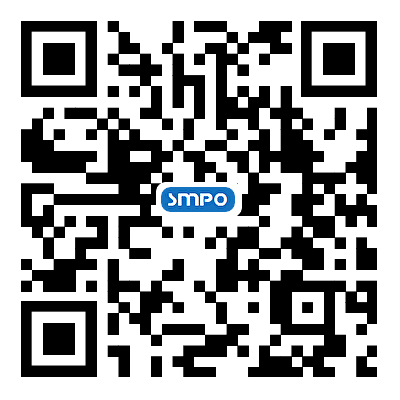Space mission: where failure is not an option
Human exploration of Mars and beyond is no longer science fiction. A three-year trip to Mars drastically increases the risks of space travel. Imagine a sleep-deprived astronaut with radiation poisoning stepping on Mars all because of poorly selected mission architecture or poorly designed mission operations. Muscles and bones weakened, immune system compromised, she sends a message to mission control, “Houston, we have a problem”[1]. On a cold morning in January 1986, The Space Shuttle Challenger was scheduled to fly its 10th mission. Temperatures dipped below freezing, and some NASA engineers were concerned about the integrity of the seals on the solid rocket boosters. Challenger was carrying the first teacher to space. Christa McAuliffe was planning to give lessons while in orbit. Challenger broke up 73 seconds after launch[2]. Christa and six other crew members never made it. NASA lost seven Astronauts on Columbia when it disintegrated on re-entry in 2003. A piece of foam had smashed into the orbiters at an impact speed of 500 miles per hour, damaging the protective heat shield. The wing disintegrated without heat shield protection when Columbia re-entered the Earth’s atmosphere at temperatures of 1540 degrees C.
A human journey into space involves endless complexities, from technical difficulties to poor mission planning, radiation, isolation and confinement, gravity (or lack thereof), hostile/closed environments, and distance from Earth. These hazards are not independent and could feed off one another and exacerbate effects on the astronauts. The traditional philosophy developed in the space program was to build simple spacecraft and put all mission complexities in the ground system where flight controllers and engineers had direct access, control, and the ability to fix things. This philosophy stemmed from the early days of space technology, where the costs of building the complexity into the ground systems were less than the cost of launching new spacecraft with complex technological requirements. However, expanding the commercial space industry has led to the growth of commercial launch/re-entry operations and increased demand for space mission planning and operations models and technologies. The Space Mission Planning & Operations (SMPO) journal is interested in ground-breaking research at the intersection of space science and business, and the intersection of space science and technology (see Figure 1).
Mission planning and operations are complex and multi-disciplinary tasks that require setting up ground stations, mission control structures, and procedures for mission operations. SMPO covers all aspects of mission planning, operations, and control, including the transition from pre-operational planning to real-time operations and post-operation review and analysis. The principal objective of SMPO is to provide state-of-the-art information for academic researchers, policy-makers, scientists, and engineers concerned with developing new methodologies, tools, and technologies for space mission planning, scheduling, operations, control, and assessment. SMPO is intended for space scientists, engineers, computer scientists, operations researchers, management scientists, information scientists, and technology managers. The journal sources theoretical, empirical, and analytical research, real-world applications and case studies in space science and business, and space science and technology. The journal publishes novel and original research on the following mission operations functions, models, applications, and technologies, such as opportunity analysis, activity request generation, command load and validation, and control performance assessment. SMPO is also interested in testing and validation functions, models, applications, and technologies (see Figure 2).
The journal seeks manuscripts on the challenges of designing and implementing space mission operations focused on operations planning, tracking and navigation, mission data receipt, and delivery, spacecraft support and analysis, and flight control and training. We are also seeking manuscripts on mission operations capabilities such as real-time flight operations, day of launch development and operations, landing/recovery support, timeline development and execution, navigation/orbit determination, collision avoidance, operations integration, command and control, in-flight emergency response, and anomaly diagnosis, tracking, response, and resolution[3]. Every mission requires critical risk trades in safety, mission success, cost, and schedule (see Figure 3). We also seek manuscripts in mission development capabilities such as analysis and modeling of vehicle performance, consumables and human/vehicle interfaces, flight design of launch, orbit, and entry flight trajectories and associated risk controls, operations tools design, development, and testing, including onboard and ground software, mission readiness assessments, and safety and risk assessment[4].
DECLARATIONS
Authors’ contributionsThe author solely contributed this article.
Availability of data and materialsNot applicable.
Financial support and sponsorshipNone.
Conflicts of interestThe author declared that there are no conflicts of interest.
Ethical approval and consent to participateNot applicable.
Consent for publicationNot applicable.
Copyright© The Author(s) 2022.
REFERENCES
1. Tavana M. A subjective assessment of alternative mission architectures for the human exploration of Mars at NASA using multicriteria decision making. Comput Oper Res 2004;31:1147-64.
2. Elizabeth Howell. Space shuttle challenger and the disaster that changed NASA forever. Available from: https://www.space.com/18084-space-shuttle-challenger.html [Last accessed on 27 Jul 2022].
3. NASA, Johnson Space Center, Mission Operations. NASA Spaceflight Capabilities. Available from: https://www.nasa.gov/centers/johnson/capabilities/operations_training/mission_ops/index.html [Last accessed on 1 Aug 2022].
4. NASA. Johnson Space center, JSC Partnerships. Mission Planning & Operations. Available from: https://www.nasa.gov/centers/johnson/partnerships/otc/mission-planning-operations [Last accessed on 1 Aug 2022].
How to Cite
Download Citation
Export Citation File:
Type of Import
Tips on Downloading Citation
Citation Manager File Format
Type of Import
Direct Import: When the Direct Import option is selected (the default state), a dialogue box will give you the option to Save or Open the downloaded citation data. Choosing Open will either launch your citation manager or give you a choice of applications with which to use the metadata. The Save option saves the file locally for later use.
Indirect Import: When the Indirect Import option is selected, the metadata is displayed and may be copied and pasted as needed.
About This Article
Copyright
Data & Comments
Data

















Comments
Comments must be written in English. Spam, offensive content, impersonation, and private information will not be permitted. If any comment is reported and identified as inappropriate content by OAE staff, the comment will be removed without notice. If you have any queries or need any help, please contact us at [email protected].